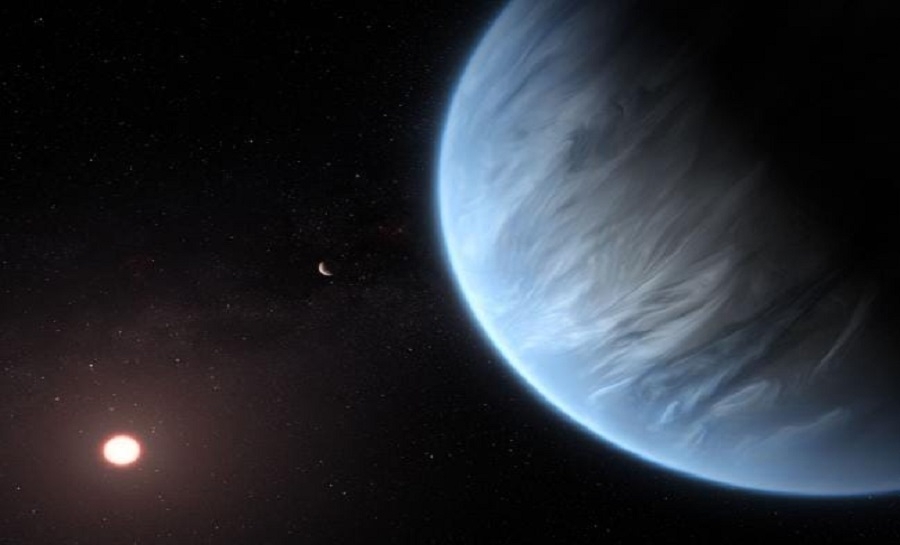Water found for first time on exoplanet
| Date :13-Sep-2019 |

LONDON :
K2-18b, which is eight times the mass of Earth, is the only exoplanet known to have both water and temperatures that could be potentially habitable
IN AN “incredibly exciting” finding, astronomers have for the first time discovered water in the atmosphere of a planet orbiting a distant star outside our solar system with Earth-like temperatures that could support life. K2-18b, which is eight times the mass of Earth, is now the only exoplanet known to have both water and temperatures that could be potentially habitable, according to the study published in the journal ‘Nature Astronomy’. The planet orbits the cool dwarf star K2-18, which is about 110 light years from the Earth in the Leo constellation, noted the researchers who used data from ESA/NASA Hubble Space Telescope. The discovery is the first successful atmospheric detection for an exoplanet orbiting in its star’s ‘habitable zone’, at a distance where water can exist in liquid form, they said.
“Finding water in a potentially habitable world other than Earth is incredibly exciting,” said first author Angelos Tsiaras from the University College London (UCL) in the UK. “K2-18b is not ‘Earth 2.0’ as it is significantly heavier and has a different atmospheric composition. However, it brings us closer to answering the fundamental question: Is the Earth unique?” said Tsiaras. The team used archive data from 2016 and 2017 captured by the Hubble Space Telescope and developed open-source algorithms to analyse the starlight filtered through K2-18b’s atmosphere.
The results revealed that the molecular signature of water vapour, also indicating the presence of hydrogen and helium in the planet’s atmosphere, researchers said. They believe that other molecules including nitrogen and methane may be present but, with current observations, they remain undetectable. “This is the coolest exoplanet that we’ve detected water in. While not a true Earth-analogue due to its size, this bodes well for our exploration of small planets,” Josh Lothringer, who studies exoplanet atmospheres at Johns Hopkins University in the US, said on Twitter.
“K2-18b receives only 5 per cent more radiation than the Earth, leaving it with an equilibrium temperature of 265 K (minus 8 degrees Celsius),” Lothringer wrote in the tweet. Further studies are required to estimate cloud coverage and the percentage of atmospheric water present, the researchers said. The researchers noted that given the high level of activity of its red dwarf star, K2-18b may be more hostile than Earth and is likely to be exposed to more radiation. K2-18b was discovered in 2015 and is one of hundreds of super-Earths -- planets with a mass between Earth and Neptune -- found by NASA’s Kepler spacecraft.